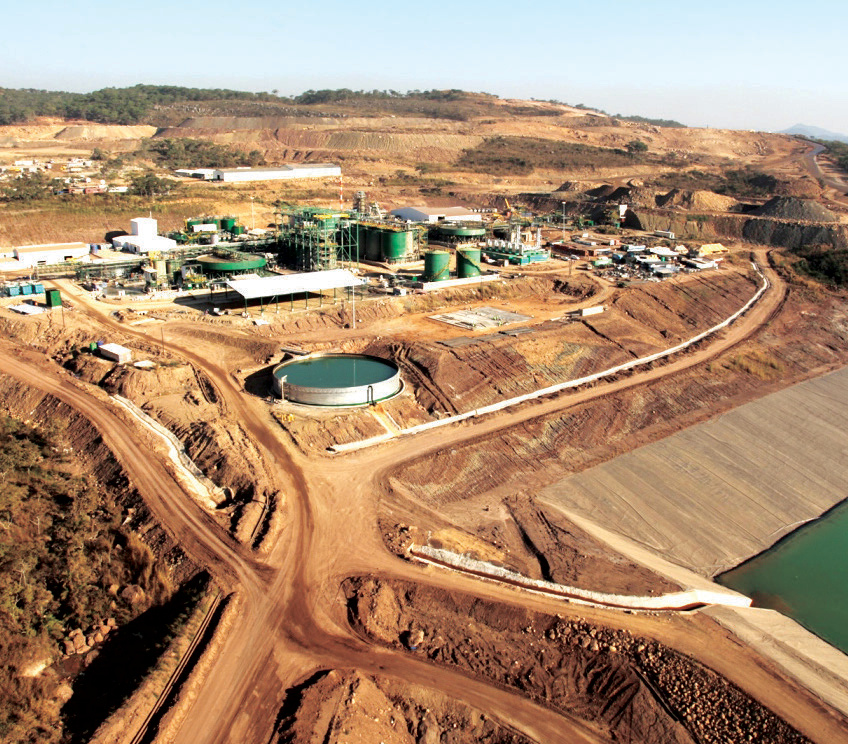Lotus Resources Ltd has started a definitive feasibility study (DFS) to assess the possibility of restarting production at its Kayelekera Uranium Project in Malawi. The DFS will build on strong results from multiple technical studies, which indicated the potential for enhanced outputs and returns.
Kayelekera is a proven operation that has historically produced 11 million pounds of uranium but ceased operations in 2014 due to sustained low uranium prices and was placed on care and maintenance. According to the company the DFS is likely to be completed by mid-2022.
Lotus managing director Keith Bowes said: “Whilst this officially kicks off the definitive feasibility study, the company has been diligently working through a number of technical studies over the course of 2021 that are central to the outcomes of this study.
“Results from the individual technical studies have been impressive, and already indicate significantly improved production rates and/or operating costs compared to our October scoping study.
“The most notable technical study so far has been the ore sorting work, a technology not available when Kayelekera was previously in production.
“This aspect alone could see annual production rates more readily increase to the original nameplate of 3 million pounds (lbs) per annum and this level achieved on a more consistent basis.”
The DFS will incorporate results from multiple technical studies including power supply, ore sorting, acid recovery and tailings that have demonstrated the potential for reduced operating costs and increased production compared to the scoping study.
The October 2020 scoping study was based on real operating data from previous operations and provided an accurate estimate of potential production rates and costs.

Ore sorting test-work
Ore sorting test-work results indicate a step change for the project, with results seeing grades increase by up to 100% when compared to the feed sample, with high recovery of up to 92%.
The ore sorting provides the option to increase production rates and convert lower marginal grade ores that could extend the mine life.
Lotus is considering a number of different scenarios to enhance the effectiveness of the ore sorting program, including maximising annual production rates to the nominal production rate of the back-end circuit.
The ore sorting program will also focus on the lower grade materials (stockpile and mineralised waste) and convert these from marginal ores to economic feed material for the main process plant.
Bowes said: “There is also scope to extend the mine life through conversion of marginal ores into higher-grade ores.
“Together with the findings of other technical studies, we are confident that a material reduction in operating costs can be achieved.
“The company looks forward to keeping shareholders updated through the year, in what will be a very busy second half to 2021.”
Power supply options
A technical study indicated that a mix of power supply options incorporating connection to the national grid, solar power and energy recovery from the acid plant will be the most reliable and cost-effective option for the project.
This could result in the reduction of power cost compared to historical operations at Kayelekera and will also reduce CO2 emissions.
Tailings storage facilities
The DFS will also incorporate the assessment of tailings storage facilities, which is ongoing with the currently preferred option being to maximise storage in the existing facility and then co-disposal of tailings and waste rock in the depleted open pit.
This option would reduce the life-of-mine capital cost compared to the scoping study
Reducing acid consumption
The company is also assessing the possibility of reducing acid consumption through ore sorting, by installing nano-filtration plant and by improving recirculation.
Acid consumption is a significant cost component accounting for around 14% of the total operating cost of the project.
Update resource estimate
Based on results of the drilling program and a review of the existing geological model and block model, the company will decide whether an updated mineral resource estimate and associated geological models should be generated for the study.
If that happens, an independent consultant has been identified to undertake this work.
This new model and estimate would then form the basis for the new production schedule and would be used to generate a new ore reserve estimate.
***Original Post by Deepak Sharma for Proactive***


